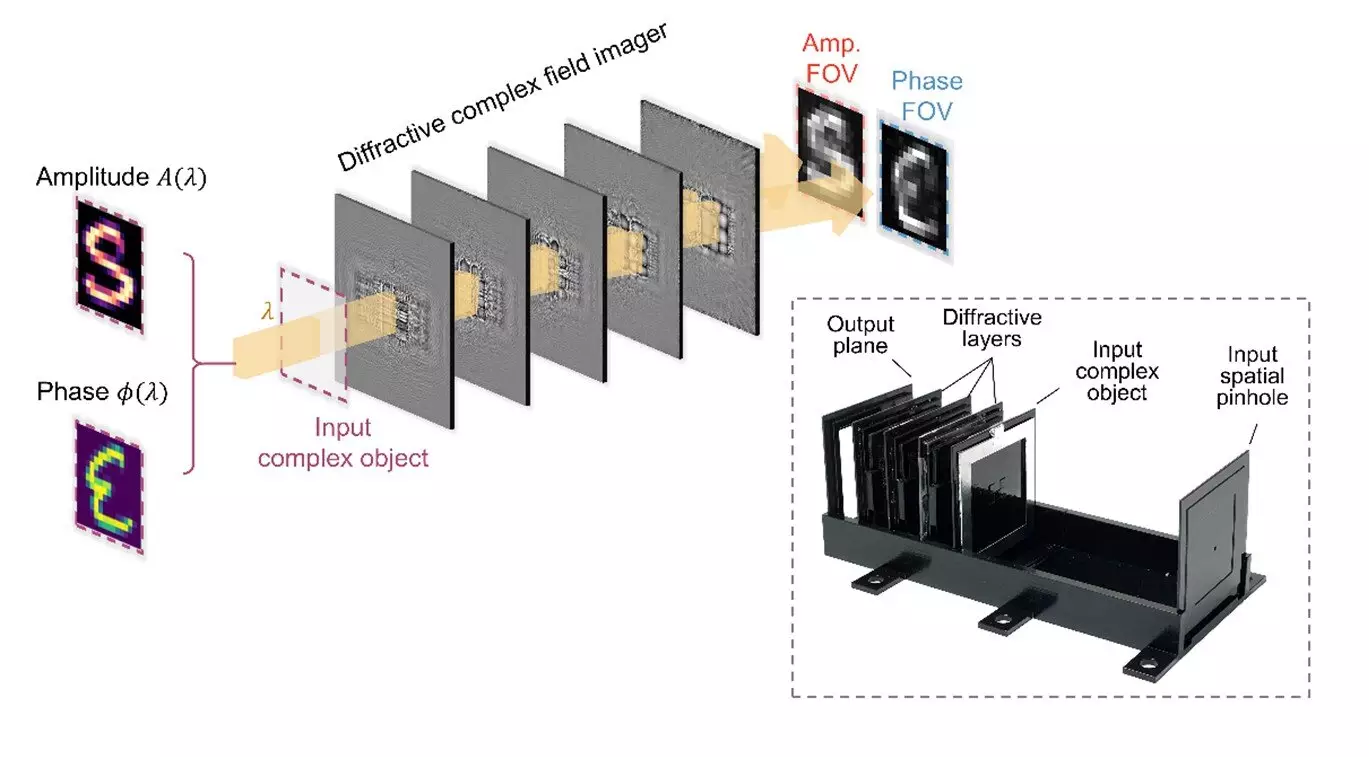Optical imaging technology has taken a significant leap forward with the development of an all-optical complex field imager at the University of California, Los Angeles (UCLA). The new imager, capable of capturing both amplitude and phase information without the need for digital processing, holds great promise for revolutionizing various fields such as biomedical imaging, security, sensing, and material science.
Traditional optical imaging technologies have long relied on intensity-based sensors that can only capture the amplitude of light, neglecting the crucial phase information. This omission of phase information has limited the ability to analyze structural properties such as absorption and refractive index distributions in detail. Current methods for capturing phase information involve complex interferometric or holographic systems with iterative phase retrieval algorithms, leading to increased hardware complexity and computational requirements.
Led by Professor Aydogan Ozcan, a team at UCLA has developed an innovative complex field imager that overcomes these limitations. The device uses a series of deep learning-optimized diffractive surfaces to modulate incoming complex fields, creating two independent imaging channels that transform amplitude and phase into intensity distributions on the sensor plane. This approach eliminates the need for digital reconstruction algorithms, simplifying the imaging process significantly.
The new complex field imager comprises spatially engineered diffractive surfaces arranged to perform amplitude-to-amplitude and phase-to-intensity transformations. These transformations enable the device to directly measure the amplitude and phase profiles of input complex fields. With a compact optical design spanning approximately 100 wavelengths axially, the imager is highly integrable into existing optical systems.
The researchers validated their designs through 3D-printed prototypes operating in the terahertz spectrum, demonstrating a high degree of accuracy compared to numerical simulations. The potential applications of the complex field imager are vast. In the biomedical field, it can enable real-time, non-invasive imaging of tissues and cells, aiding in medical procedures. In environmental monitoring, the imager can facilitate the development of portable lab-on-a-chip sensors for rapid detection of microorganisms and pollutants. In industrial applications, it can be used for rapid material inspection and quality control.
The development of the all-optical complex field imager represents a significant advancement in optical imaging technology. By enabling the direct capture of amplitude and phase information without digital processing, this innovation simplifies the imaging process and expands its potential applications across various fields. As research continues to refine and expand upon these designs, the impact of the complex field imager is expected to grow, offering new opportunities for scientific research and practical applications.


Leave a Reply